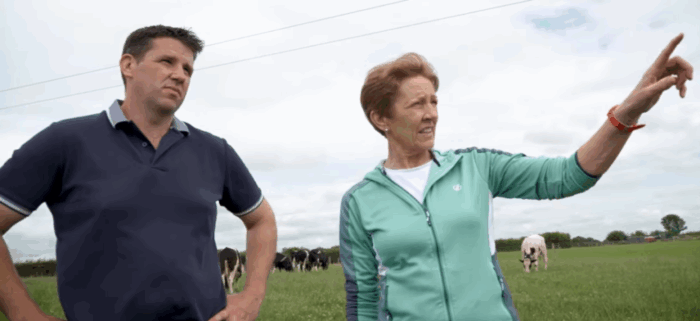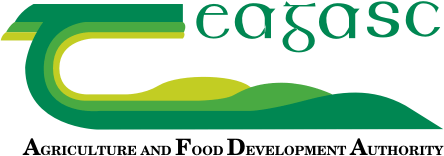Profit, production and performance – the Dollards’ dairy beef system

A practical and sensible approach to dairy beef in Urlingford, Co. Kilkenny has allowed for the alignment of performance, production and ultimately profit for the Dollard family.
This feat resulted in the family receiving national acclaim when they were crowned the Reducing Greenhouse Gas Emissions Category Winner of the Teagasc/FBD Environmental Sustainability Awards. Dr. Siobhán Kavanagh, Signpost Programme Communications and Engagement Specialist, introduces us to the family behind the operation, while outlining some of the key actions they’ve taken to improve sustainability.
The Dollards’ farming enterprise at The Islands, Urlingford, Co. Kilkenny is very much a family affair. Patrick farms in partnership with his mother Margaret and is aided by his wife Tina and three children.
Rearing 180 calves from three weeks through to finish, occasionally topping up with weanlings, approximately 185 cattle are finished each year at an average at of 21 months.
Earlier finishing, often seen as a barrier at farm level, is a critical technology in achieving Ireland’s greenhouse gas emissions reduction targets. Patrick’s approach centres on finishing the majority of stock before the second winter, at which point they produce carcass weights of approximately 325kg.
With this level of carcass performance regularly being achieved, Patrick sees no sense in keeping them longer – it’s a saving on feed, but also vital for reducing on-farm greenhouse gas emissions, a practice often promoted by his local Teagasc Drystock Business and Technology Advisor, Terry Carroll. On the other hand, he’s cognisant that not all animals will reach this target, instead the remaining 33% are re-directed to a traditional January/February finish out of the shed after the second winter.
The Dollards have made significant progress in adopting technologies to reduce emissions making them the worthy winner of the Reducing Greenhouse Gas Emissions category of the Teagasc FBD Environmental Sustainability Awards 2025.
Find out more about the Dollards’ farming enterprise in the below video:
The key actions taken by the Dollard family:
- They place significant emphasis on soil fertility on the farm.
- Over 90% of soils are optimum for phosphorus (P) and 100% of soils have optimum pH.
- They have potassium (K) fixing soils, which makes it difficult to build fertility, so they have gone with a little and often approach with K and replace what they take off.
- Organic manure is a valuable resource on this farm with much of the slurry being applied in the Spring using LESS to optimise its value.
- A lot of emphasis has been placed on incorporating clover into grassland on the farm, with over 60% of the farm now in clover.
- The combination of soil fertility, optimised use of organic manures and the use of clover has allowed this farm to reduce chemical nitrogen (N) use by 20% in the last few years.
- Grassland management and silage quality is excellent on this farm.
- They have good grazing infrastructure and are measuring grass weekly during the main grazing season and recording and budgeting through PastureBase. This allows for informed decisions on grassland management to be made, thus maintaining quality and maximising performance at grass.
- Grass yield in 2024 was 11.2 t DM / ha. Over 80% of the silage is made on this farm is made from surplus bales, keeping grass quality good and making very good quality silage.
- Achieving a low age at finish is being achieved on this farm through:
- Buying good calves – genetically superior Commercial Beef Values (CBVs) and good health status.
- Patrick and Margaret buy from just four farms,
- Good grassland management
- A good herd health plan.
- Over 80% of the nitrogen applied on this farm is applied as NBPT protected urea.
- They have had very good success with protected urea on the farm. The remainder of the N is applied as 10-10-20 and 18-6-12.
The above has allowed the Dollards to finish steers at an average of 21.5 months, with two-thirds of the 185 animals finished every year going to the factory before the second winter at a carcass weight of 325kg. The carbon footprint for this farm is 7.6 kg CO2e/kg LW.
Patrick and Margaret have signed up to the Signpost Advisory Programme and have prepared a plan for their farm using AgNav, the digital sustainability platform.
Looking ahead, they aim to move to 100% protected urea by 2026, reduce age of finish further, and add solar panels through TAMS, positioning their farm as a model of sustainable dairy beef production. In Patrick’s own words: “We are a heavily stocked farm, I think we’re a very sustainable farm and at the same time we’re highly profitable.”
Find out more about the Teagasc/FBD Sustainability Awards here.
More from Teagasc Daily: The stand-out practices on Don Somers’ tillage farm
